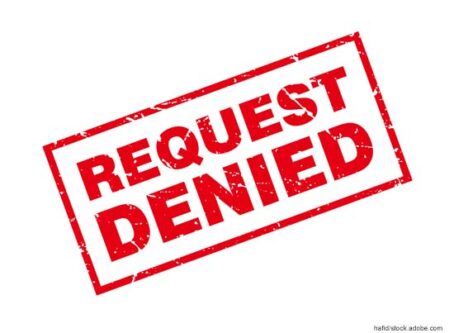Truckers point to pay, detention time as ways to improve supply chain
Hundreds of organizations and individuals have already responded to the U.S. Department of Transportation’s request for ideas on how to improve the supply chain.
The Department of Transportation published a notice on Sept. 16. Comments will be accepted through Monday, Oct. 18. The notice seeks “practical solutions from a broad range of stakeholders to address current and future challenges to supply chain resilience.”
As of Oct. 12, there had been 239 comments already filed to the docket. Many of the comments were from truck drivers suggesting that changes need to be made to the driver pay model and detention time. Driver retention has been a hot topic in recent months as the Federal Motor Carrier Safety Administration noted during a roundtable discussion in July that the driver turnover rate at large fleets is about 90%.
Kenny Ruff wrote that the administration needs to take steps to make truck driver a better long-term career.
“Nobody wants this job anymore,” Ruff wrote. “Trucks and truck drivers are taxed to death. Long gone are the days that trucking was a decent living. Make shippers and receivers not waste a trucker’s time or be prepared to pay detention pay.”
Other truckers echoed Ruff’s comments and also discussed such issues as the lack of safe truck parking and overregulation.
“Force shippers and receivers to abide by a strict two-hour detention rule,” wrote Ryan Zadow. “Force grocery warehouses to hire dock workers instead of using lumper services.”
Travis Burcham wrote, “Parking is the major issue. Rather than states enacting no parking on ramps … How about being more helpful?”
“We are the backbone of America,” Jaden Wilson wrote. “We proved that during the pandemic, and we are tired of being micromanaged and looked down by the FMCSA.”
Hawkins Trucking told the DOT that the main problem in the supply chain involves delays at shippers and receivers.
“Customers are delaying trucks for hours,” the trucking company wrote. “Three and four hours and sometimes even seven or eight hours is inexcusable … Most do not compensate or just plain do not care.”
The Department of Transportation provided 13 topics for the public to focus on in the comments.
- The identification of major infrastructure or operational bottlenecks and chokepoints across all aspects of the freight and logistics supply chain that slow or impede efficient cargo movement within the freight and logistics sector, and the most effective investments and management practice improvements that could be made to alleviate those bottlenecks.
- Current and potential future shortages and/or distribution limitations of essential cargo-handling equipment, such as chassis and shipping containers, and how these challenges can be or are likely to be addressed by the freight and logistics industry over both the medium and longer term.
- Warehouse capacity and availability, and any challenges faced in operating and siting/constructing those facilities, as well as challenges faced by third-party logistics service providers and other stakeholders in the logistic system.
- Major risks to resilience within the freight and logistics sector. What factors help to mitigate, or conversely exacerbate, these risks?
- The effects of climate change on transportation and logistics infrastructure and its implications for supply chain resiliency.
- Technology issues, including information systems, cybersecurity risks, and interoperability, that affect the safe, efficient, and reliable movement of goods. Would greater standardization of those technologies help address those challenges?
- Key opportunities and challenges with respect to the existing and future workforce to ensure a well-functioning freight and logistics supply chain and achieve the president’s goal of increasing good-paying jobs with the choice of a union. Are there additional workforce or skill-set opportunities and needs currently, or expected in the future?
- Current barriers that inhibit supply chain performance. For any barriers identified, please address the actors involved and potential outcomes should those barriers be removed.
- Critical assets that the sector relies upon and their expected future availability. Would increasing domestic production of these assets be desirable or feasible as a means of ensuring greater supply chain resiliency?
- Technological practices, including data sharing, that are being implemented at various levels across the supply chain sector. What are the upsides, challenges, and drawbacks of further adoption?
- Actions that DOT or other agencies could take under existing authorities or in partnership with states, local governments, the private sector, or labor to address current and evolving challenges within the freight and logistics sector.
- Other policy recommendations or suggested executive, legislative, or regulatory changes to ensure a resilient supply chain that should be considered, including means to collaborate more effectively across government agencies and suggestions based on state and international models.
Recommended actions by nonfederal entities, including state and local governments, private firms, labor, and other participants in the freight and logistics sector that could be encouraged.
How to comment on improving the supply chain
Public comments do not have to be limited to the 13 topics listed above. Commenters can go to the Regulations.gov website and enter Docket No. DOT-OST-2021-0106. LL









